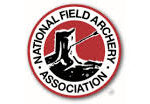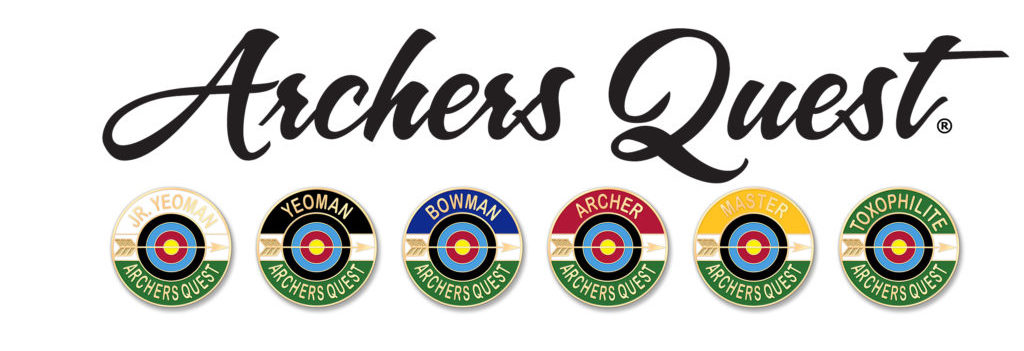Glossary of Terms
https://en.wikipedia.org/wiki/Glossary_of_archery_terms Click this if you really want to “drill down” on archery terminology!
End – This is the number of arrows shot in one volley before scoring and shooting another. Taken from the old competitions where archers shot a target on one end of a field, went to score and collect arrows, then turned to shoot a target at the other end of the field.
Round – The combination of ends to complete a full competition. Such as in NFAA indoor round – 60 arrows total are shot, consisting of 12 ends of 5 arrows.
Bows:
Draw weight – The number of pounds of force required to draw a bow to its draw length. Draw length is measured at 28″ for adults and 24″ for youth as a standard. This weight is usually marked on the bow. It can be adjustable in range on compound bows.
Traditional or Long bows – Made by laminating pieces of woods like yew, ash or elm, or, alternatively two pieces of wood with differing characteristics such as elm, yew strengthened with fiberglass. The tips of these bows may be made out of bone or horn.
Recurve – Typically made in three sections with a handle made from cast or machined aluminum, fitted with flexible limbs on each end made from laminates of carbon, fiberglass, and wood. Space age, non-stretch materials are used for bowstrings.
Compound – Compound bows are much more technically sophisticated, employing wheels or ‘cams’ at the tip of the limbs. Acting as lever, these wheels allow an archer to draw and hold a bow with relative ease.
Arrows:
Shaft – The long, narrow middle of the arrow, connecting the pile to the nock. Any substance (wood, aluminum, carbon) is allowed, but the shaft may not exceed 9.3 mm (about 1/3 of an inch) in diameter. It may be marked with the archer’s name or initials for identification or have a painted design known as a “crest” to distinguish an archer’s arrows.
Point – The tip of the arrow. It is attached to the shaft – by glue and friction, tied on, or screwed into an insert (glued inside a hollow shaft). Points are many shapes for many purposes.Target points are shaped like a bullet, best for target archery.
Nock – The attachment on the rear end of an arrow that holds it in place on the bow string (also, to “nock” is to place the arrow on the string). Modern nocks are usually manufactured out of plastic.
Fletching – The feathers (real or synthetic) attached to the arrow which helps stabilize it during flight. The same color pattern must be used throughout an end. Feather fletchings are used to shoot off a hard rest as they crush to slide by without affecting flight. Vane fletchings are plastic usually and do not give, so are shot off a moveable rest.
Other Equipment:
Release aids – Release aids allow for ease of release of the bowstring with minimum friction. Mostly used with shorter limbed compound bows due to the oblique angle of the bowstring. Much practice and caution are needed to safely execute a shot. Common mistake is to prematurely hit the trigger as drawing the bow.
Long rod stabilizer – From 29 to 36 inches long, it balances and stabilizes the bow when raised.
Side rod stabilizers – From 18 to 12 inches long, these also balance and stabilize the bow when raised.
Grip – Where you place your hand to hold the bow.
Riser – The handle of the bow, and the foundation that supports all other elements, like limbs and sights.
Limb – The part of the bow from the handle to the tip. A limb can have a variety of strength to provide a draw weight comfortable for the archer. The side facing the target is the back of the bow. The side facing you as you shoot is the FACE.
Clicker – A mechanical device mounted on the riser. It helps an archer release at the same spot during the drawing process. This is one way of getting the same amount of power out of the bow consistently with each shot. Most commonly used with Olympic recurve bows.
Quiver – Anything that you store your arrows in. A ground quiver, or a quiver worn by the shooter or attached to the bow, may be used to hold arrows.
Arm guard – used to protect the forearm from getting hit by the string. Attaches to the arm holding the bow.
Finger Tab – Protects the fingers of the bowstring hand while drawing the bow. Most needed for powerful bows with draw weight over 25 pounds.
Archery Styles:
Target Archery – In target archery you shoot at round multi-colored targets. Shooting at distances vary from 18 meters (indoor) to 90 meters (outdoor), with target sizes being 40 or 60 centimeters for indoors and either 80 or 122 centimeters for outdoors. The targets have five colors with each color being divided into 2 to provide 10 scoring zones. The innermost ring is given a value of 10 points, down to the outermost ring with a value of 1 point. Target rounds involve shooting a set number of arrows from one or several distances.
Field Archery – Field archery is a challenging outdoor discipline in which the archer takes on the terrain as well as the target. It is a roving course set up to take advantage of hills, slopes, angles and light and shade. This is the archery version of golf! Field archery rounds involves walking a course and stopping to shoot a set number of arrows (3 arrows in FITA Field, 4 arrows in NFAA Field) over varying distances at large foam targets that resemble familiar shapes or other target butts. A NFAA Field course is 28 stations comprised of 14 set distances shot twice or repeated. These distances range from 10 yards to 80 yards.
3D Archery – 3D archery is a subset of Field archery, a newer version of using 2D animal pictures as hunting practice. Other national organizations (ASA and IBO) run their own versions and scoring as a game. All utilize life-sized models of game animals and are popular with hunters. Normally a course of 15-30 animals are set up in challenging hunting shot scenarios. One arrow per station is shot in most cases.
Clout Archery – Clout archery is derived from medieval warfare where archers would lob arrows onto the advancing army. In Clout a target measuring 15 meters is diameter is marked on the ground, with a triangular marker placed at its center. The archer’s task is to lob arrows into this ground-target from distances up to 180 meter distances.
Flight Archery — In flight archery the aim is to shoot the greatest distance; accuracy or penetrating power are not relevant. Flight archery relies on the finest in performance equipment, optimized for the single purpose of greater range.
Ski Archery — An event very similar to the sport of biathlon except a recurve bow is used in place of a gun. The athletes ski around a cross-country track and there are two stances in which the athlete must shoot the targets: kneeling and standing. During competition the skis must not be removed at any time. The athlete may unfasten the ski when shooting in the kneeling position but must keep the foot in contact with the ski. The shooting distance is 18 meters and the targets 16 cm in diameter. In certain events, for every missed target, the athlete must ski one penalty loop. The loop is 150 meters long.
Archery organizations:
FITA — The international governing body of archery is the International Archery Federation (FITA). Founded on the 4th of September, 1931 in Lwow, Poland, by seven countries (France, Czech Republic, Sweden, Poland, the United States, Hungary, and Italy), FITA serves to promote and regulate archery world-wide through its more than 140 Member Associations (National Federations or Associations) and in conformity with the Olympic principles. It aims at framing and interpreting the FITA Rules and arranging for the organization of World Championships and other international competitions. It is now known as World Archery. https://worldarchery.org
United States:

ATA – The Archery Trade Association, formerly known as the Archery Manufacturers Organization, (AMO) is a non-profit archery trade organization for the promotion of archery and bowhunting through sale of equipment, projects in archery education, the standardization of equipment measures, and the sponsorship of events. It includes manufacturers, distributors, retailers, and other companies associated with these industries. On older bows you may see an AMO marking to indicate the draw weight of a bow. https://www.archerytrade.org
 USA Archery – The governing body for Olympic archery in the USA. It was known as National Archery Association when founded in 1879. Focused on developing Olympic archers, providing instructor certification and National Training System (NTS). Participation is developed through a national system of tournaments where individuals build national ranking for consideration for Olympic and World Team selection. Youth start development through clubs called JOAD (Junior Olympic Archery Development). Adults participate in AAA (Adult Archery Achievement). For both groups there are awards based on shooting score performance. http://www.teamusa.org/USA-Archery
USA Archery – The governing body for Olympic archery in the USA. It was known as National Archery Association when founded in 1879. Focused on developing Olympic archers, providing instructor certification and National Training System (NTS). Participation is developed through a national system of tournaments where individuals build national ranking for consideration for Olympic and World Team selection. Youth start development through clubs called JOAD (Junior Olympic Archery Development). Adults participate in AAA (Adult Archery Achievement). For both groups there are awards based on shooting score performance. http://www.teamusa.org/USA-Archery
 NFAA – National Field Archery Association founded in 1939, the NFAA now consists of 49 chartered state associations and nearly 1,000 affiliated clubs. The NFAA is a member of the International Field Archery Association and a national allied organization of USA Archery. Notably, NFAA presents the annual Vegas tournament and Indoor Nationals. https://www.nfaausa.com
NFAA – National Field Archery Association founded in 1939, the NFAA now consists of 49 chartered state associations and nearly 1,000 affiliated clubs. The NFAA is a member of the International Field Archery Association and a national allied organization of USA Archery. Notably, NFAA presents the annual Vegas tournament and Indoor Nationals. https://www.nfaausa.com
ASA – Since its inception in 1993 the Archery Shooters Association, headquartered in Kennesaw, Georgia, has hosted tens of thousands of amateur and professional archers from across the United States in national ASA Pro/Am and ASA Federation competitions focused on 3D archery only. http://www.asaarchery.com
IBO – The International Bowhunting Organization (IBO) was created in 1984. Founded to promote bowhunting and evolved to provide a series of 3D competitions culminating with the IBO World Championship. http://www.ibo.net
NASP – Developed in Kentucky in 2001 as a way to introduce learning outdoor skills. Now offered through most states Department of Natural Resources sponsoring school PE participation. This introductory archery experience delivered through schools has become the most successful grassroots archery program in the U.S. evolving into a competition among schools and states in target shooting skills. Notably, this program uses one style and brand of bow and arrow. The program has documented the benefits of archery on youth and their improved performance in school and character and self-reliance development. http://naspschools.org
